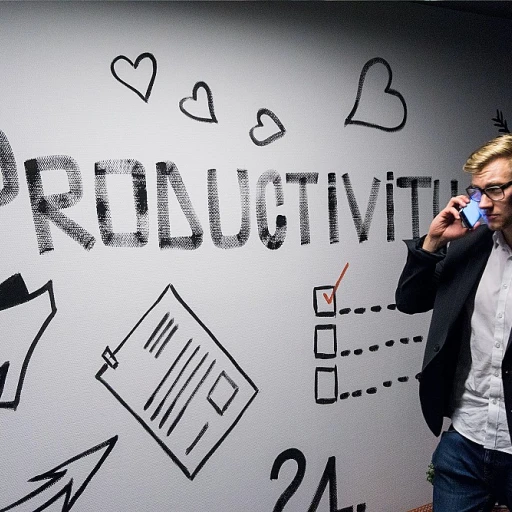Understanding the Importance of a Softer Approach
Prioritizing Empathy and Understanding
The modern workplace is continuously evolving, and with it, the expectations placed upon employees and management alike. One critical success factor is embracing a gentler approach to the onboarding process. This involves acknowledging the importance of empathy, understanding, and communication in ensuring a seamless transition for new employees. Soft skills play a crucial role in shaping a positive work environment. These include emotional intelligence, effective communication, critical thinking, and problem-solving abilities. By valuing these skills, companies can better equip their team members to navigate workplace challenges. Incorporating a soft approach into the onboarding experience means creating a welcoming atmosphere where employees feel valued and supported from day one. Training programs should emphasize the development of soft skills alongside traditional hard skills to foster a balanced skill set. During the onboarding journey, programs should include comprehensive communication skills training, encouraging active listening, and fostering an open dialogue. Development of these skills can lead to improved team dynamics, ultimately contributing to overall business success. Adopting this mindset not only empowers employees to succeed but also lays the foundation for a positive company culture. Visit our inclusive onboarding experience guide to learn more about creating a supportive environment from the outset.The Onboarding Experience as a Catalyst
The Impact of Onboarding on Employee Integration
The onboarding process plays a critical role in shaping a gentle and supportive work environment. It acts as a catalyst for welcoming new employees, setting the tone for their journey within the company. This phase is not merely a box-ticking exercise; it is an opportunity to invest in skills development, allowing individuals to transition smoothly into their roles, and contribute effectively from the start. A well-designed onboarding experience emphasizes effective communication, offering new hires a clear understanding of their responsibilities. It also nurtures their soft skills, such as emotional intelligence and problem solving, which are crucial for fostering a harmonious workplace. As employees gain confidence in their roles, they become more adept in critical thinking and active listening, strengthening their interaction with team members and customers alike. Providing skills training during the onboarding stage helps employees develop both soft and hard skills crucial for their professional growth. This approach prepares them to handle diverse challenges, enabling them to enhance their time management and leadership abilities, which directly contributes to the overall success of the business. Furthermore, onboarding should be a collaborative effort involving various teams. This initiative not only supports new hires but also enriches the existing workforce by encouraging continuous learning and development. To leverage the full potential of onboarding, companies must continually assess and refine their programs, incorporating employee feedback and emerging industry trends. By promoting a culture that values skills workplace integration and effective communication, businesses can ensure that their onboarding experience becomes a transformative force. For strategies on crafting an inclusive onboarding experience that nurtures a sincere and welcoming workplace culture, explore this detailed guide.Key Elements of an Effective Onboarding Program
Establishing a Foundation for Success
Creating a thorough and effective onboarding program is crucial in developing and nurturing employees within the workplace. This process serves as a fundamental building block that can significantly influence the long-term success of both the company and its team members.
First and foremost, effective communication is essential. The ability to clearly convey information and expectations can make all the difference in how new employees perceive their roles and settle into their work environment. Skills training that emphasizes active listening and other communication skills ensures that individuals can engage fully with their work and interact smoothly with colleagues and customers alike.
Moreover, prioritizing skills development focused on problem solving and emotional intelligence enables employees to effectively navigate the challenges they may face. Training programs can be designed to incorporate both hard and soft skills, providing a holistic learning experience. Such strategic training helps in building a strong team that can adapt and excel in dynamic situations.
An essential aspect of any onboarding program is the integration of skills management and feedback loops. Encouraging a culture of continuous feedback helps refine employee skills and keeps the workplace dynamic and responsive to change. This not only enhances time management and the leadership potential of employees but also fosters an environment where learning and development are continuously pursued.
The role of leadership cannot be understated. Leaders who invest time in coaching and guiding new employees help bridge any gaps between individual ambitions and business objectives. Through this approach, companies can cultivate a more inclusive and collaborative environment, ultimately leading to enhanced employee engagement and satisfaction.
Training and Development for Soft Skills
Enhancing Soft Skills Through Training and Development
When fostering a gentle workplace, the development of soft skills plays a pivotal role. While technical expertise is crucial, soft skills such as effective communication, emotional intelligence, teamwork, and problem-solving are essential for a harmonious work environment. These skills help employees navigate interpersonal relationships, deal with challenges, and enhance overall workplace dynamics. Training programs can be designed to focus specifically on these skills. Understanding the importance of such training is the first step toward effective skills development. Implementing comprehensive training programs ensures that employees develop not only hard skills but also the critical thinking and communication skills required in today’s business world. Fostering Collaboration Through Team-Based Learning One effective method is incorporating team-based learning, which encourages collaboration among team members. Through group activities and projects, employees can practice communication skills, listen actively, and engage in collective problem-solving. This approach not only enhances their ability to work within a team but also builds trust and understanding among colleagues. Leadership and Emotional Intelligence Leadership development programs that emphasize emotional intelligence are also beneficial. By enhancing leaders’ ability to manage their emotions and empathize with others, these training programs contribute significantly to a more compassionate and supportive work environment. Employees are more likely to thrive in a workplace where leaders demonstrate understanding and commitment to their well-being. Effective Communication and Time Management Workshops Workshops focused on effective communication and time management are crucial components of skills training. These workshops can offer practical tools and techniques that help employees balance their tasks and communicate their needs more effectively. This not only boosts individual productivity but also contributes to smoother operations within the company. Feedback as a Learning Tool Lastly, integrating feedback into training programs can significantly aid skill development. Constructive feedback helps employees identify areas for improvement while reinforcing positive behaviors. A culture of continuous feedback nurtures growth and adaptability, key components for any forward-thinking business. By strategically developing a training program that prioritizes soft skills, companies can ensure that their employees are equipped to create a supportive and effective work environment. This, in turn, becomes a pivotal factor in fostering a culture of kindness and cooperation in the workplace.Measuring the Impact of a Softer Approach
Evaluating the Benefits of a Softer Onboarding Approach
Adopting a gentler onboarding approach is vital for both new employees and the organization in general. However, measuring its impact can be challenging. Understanding this influence not only helps refine the onboarding process but also demonstrates its effectiveness. To assess the benefits, companies should focus on key metrics related to skills development and overall employee satisfaction. Here are some aspects to consider:- Employee Engagement and Satisfaction: An effective onboarding process ensures that employees feel valued, leading to increased engagement and satisfaction levels. Conducting regular surveys and one-on-one feedback sessions helps measure these aspects.
- Retention Rates: A structured onboarding that emphasizes emotional intelligence and soft skills training can help improve retention rates. Monitoring turnover rates before and after implementing a softer approach provides insights into its effectiveness.
- Skills Development: Evaluate progress in soft skills like communication, critical thinking, and problem solving through assessment tools. These developments show how prepared employees are for successful assimilation into the workplace.
- Team Dynamics: Observing team interactions is crucial. A productive onboarding experience often results in improved team dynamics and collaboration, as new hires are better integrated into existing teams.
- Customer Service: Directly related to soft skills, enhanced customer service indicates that employees have effectively absorbed skills training. Metrics here can include customer feedback and service ratings.
Continuous Improvement and Feedback
Seeking Constant Growth through Feedback
In our ever-evolving work environment, it is crucial to assess and refine onboarding processes continually. By seeking continuous feedback, companies can better align their programs with employees' soft skills and personal development needs. Feedback should encompass all aspects of the onboarding experience, focusing on communication, training, and effective integration into the workplace. Creating a welcoming avenue for team members to express their thoughts ensures that the onboarding program remains relevant and efficient.- Effective Communication: The feedback process must prioritize clear communication, helping management understand the specific needs of their employees. This involves active listening and understanding the subtleties of employee feedback, enabling leadership to foster an environment that values input from all team members.
- Tools for Feedback Collection: Businesses can employ various tools such as surveys, one-on-one sessions, and team meetings to gather insights. These platforms allow employees to articulate their experiences, highlighting areas that require improvement or additional support.
- Soft Skill Development Feedback: The onboarding assessment must also consider feedback regarding soft skills training programs, addressing elements like emotional intelligence, problem-solving, and critical thinking. By understanding employees' learning journeys, companies can tailor skills training initiatives to meet individual needs.












